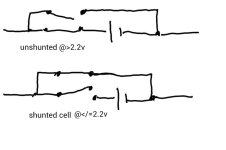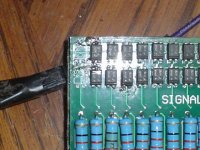kokopelli314
100 mW
- Joined
- Oct 4, 2009
- Messages
- 41
Ok so I've been riding a recumbent trike and a velomobile for exclusively for about 4 years. Car-free, by choice. Averaging between 12,000-15,000 km/year. Gone through lots of tires and replaced 5ah pouches in both Ping packs, 60/20 & 48/20. Also replaced the Signalab BMS in each. Even rode the 48/20 bareback for a month, while waiting for a BMS, never pulling more than 12ah. Been let down a couple times on 100+k rides. While pushing 120kg uphill at the lowest gear possible, with 30k left to pedal, I thought about all of the power, still in my 60v/20ah pack which kicked out at 15ah, just because of 1 pouch, in 1, 4 cell bank. Oy Vey, is this the best we can do??
So I thought about a single cell balance circuit that not only balance but would also shunt across cell banks that went below 2.2v. So the pack output would suddenly drop by 2.2v or so but would still be usable at say 46v, then 44 and so on. The drained cells would be isolated from the rest of the pack until the charger current reset, say a gate triggering a mosfet to reconnect the cellbank.
Does anyone know of a BMS like this? Seems to me that it would make far more sense than pedalling around a partially charged pack.
So I thought about a single cell balance circuit that not only balance but would also shunt across cell banks that went below 2.2v. So the pack output would suddenly drop by 2.2v or so but would still be usable at say 46v, then 44 and so on. The drained cells would be isolated from the rest of the pack until the charger current reset, say a gate triggering a mosfet to reconnect the cellbank.
Does anyone know of a BMS like this? Seems to me that it would make far more sense than pedalling around a partially charged pack.



